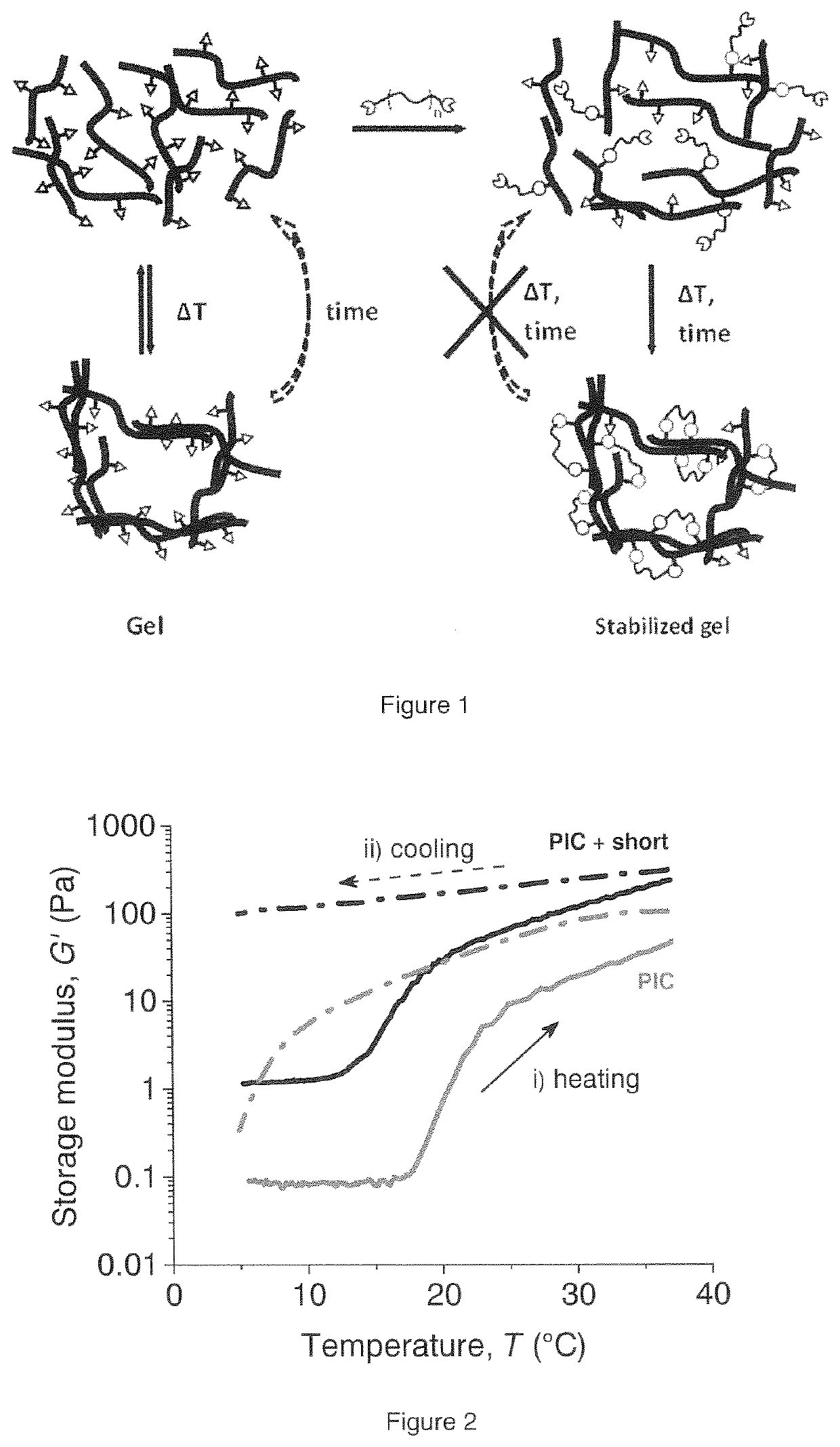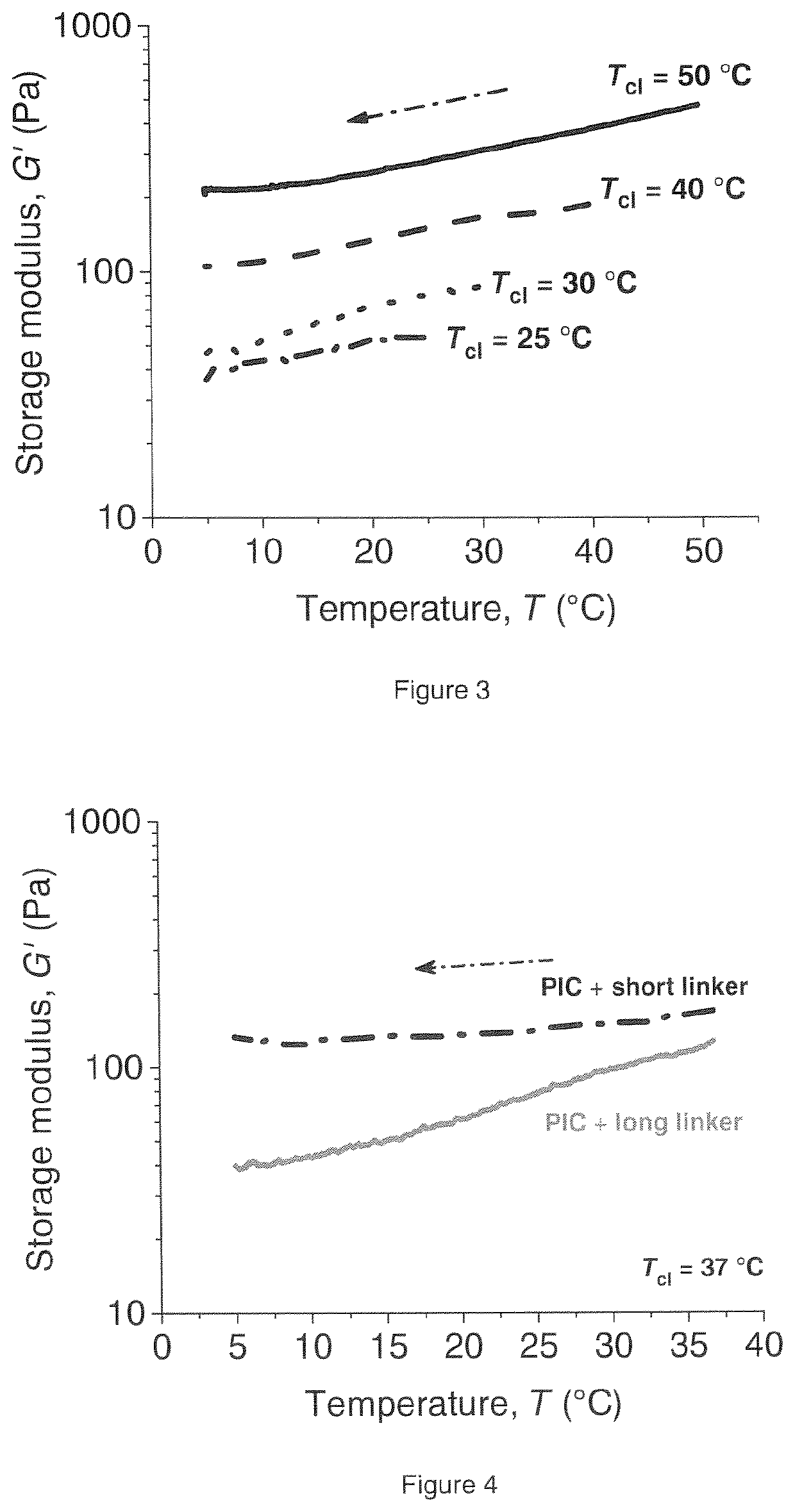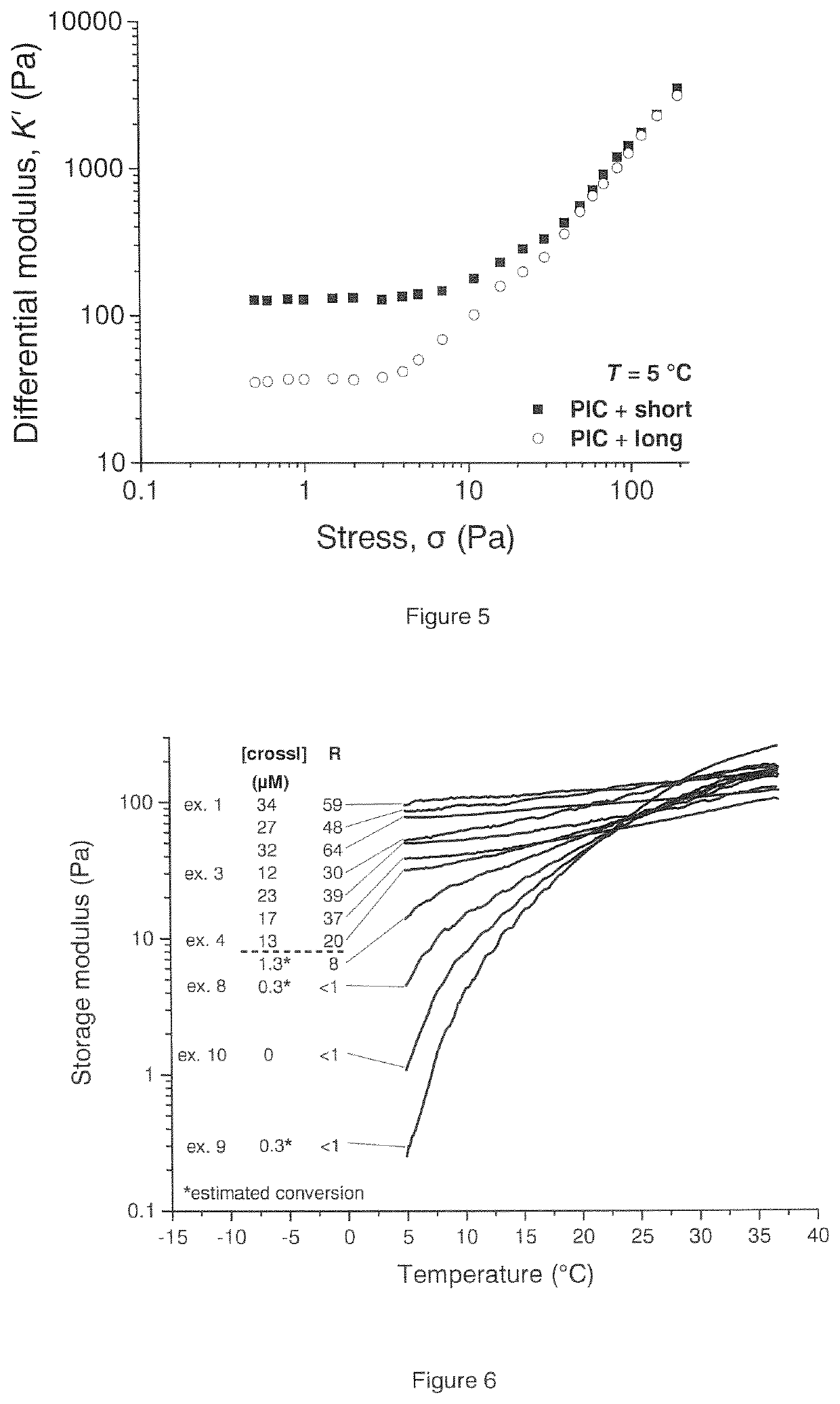Biomimetic networks comprising polyisocyanopeptide hydrogels
a biomimetic network and polyisocyanopeptide technology, applied in biochemistry apparatus and processes, general culture methods, prosthesis, etc., can solve problems such as disadvantages in ease of reversibility of mechanical properties
- Summary
- Abstract
- Description
- Claims
- Application Information
AI Technical Summary
Benefits of technology
Problems solved by technology
Method used
Image
Examples
example 1
Preparing a Crosslinked Hydrogel
[0133]A solution of 2 mg mL−1 of the commercially available short crosslinker in DMSO, or 2 mg mL−1 of the long crosslinker in milliQ water, was prepared and diluted to the desired concentration using milliQ water. The concentrations were chosen such that the polymer and crosslinker solutions could be mixed in a 1:1 ratio to achieve the ratio [DBCO] / [N3]=1. Before measurement, the solution of the polyisocyanide copolymer and a solution of the long crosslinker or the short crosslinker were mixed on ice in a 1:1 ratio, briefly homogenized and immediately heated to 37° C., for 1 hour, in a TA Instruments Discovery Hybrid Rheometer. After this, the gel was cooled down to 5° C. and was allowed to stabilize for 10 minutes. A gel with a storage modulus of 161 Pa was obtained at 37° C. The storage modulus at 5° C. was 95 Pa. The conversion of DBCO after 15 minutes was 81±10% (measured using UV-Vis). R=59%. Crosslink density=34 μM.
example 2
Stability of the Crosslinked Hydrogel
[0134]Example 1 was repeated except that the samples were allowed to stabilize for 19 hours instead of 10 minutes at 5° C. The storage modulus of this sample after 10 minutes at 5° C. was 103 Pa (R=63%), and the storage modulus after 19 hours was 101 Pa (R=64%, Crosslink density=32 μM).
experiment 3
Low Crosslinker Concentration Gives Loose Bundles
[0135]Example 1 was repeated except that the ratio [DBCO] / [N3] was 0.5 instead of 1.0. The storage modulus of this gel at 37° C. was 185 Pa, and the storage modulus at 5° C. was 55 Pa. The conversion of DBCO after 15 minutes was 94±10% (measured using UV-Vis). R=30% Crosslink density=12 μM.
PUM
| Property | Measurement | Unit |
|---|---|---|
| Temperature | aaaaa | aaaaa |
| Temperature | aaaaa | aaaaa |
| Temperature | aaaaa | aaaaa |
Abstract
Description
Claims
Application Information
 Login to View More
Login to View More - R&D
- Intellectual Property
- Life Sciences
- Materials
- Tech Scout
- Unparalleled Data Quality
- Higher Quality Content
- 60% Fewer Hallucinations
Browse by: Latest US Patents, China's latest patents, Technical Efficacy Thesaurus, Application Domain, Technology Topic, Popular Technical Reports.
© 2025 PatSnap. All rights reserved.Legal|Privacy policy|Modern Slavery Act Transparency Statement|Sitemap|About US| Contact US: help@patsnap.com



